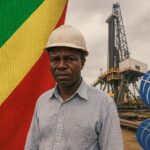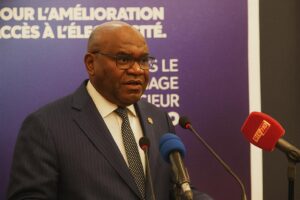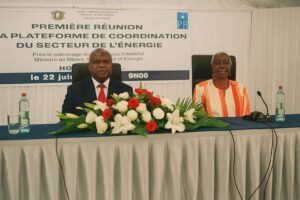Harare talks rekindle a continental vision
Behind closed doors in Harare, ministers of the Southern African Development Community, senior officials of the World Bank and the African Development Bank quietly resurrected what has long been described as the world’s most ambitious hydroelectric undertaking. The thirty-six-hour working session produced a calibrated communiqué reaffirming the regional character of Grand Inga while designating 2024-2025 as a period of “accelerated preparatory diligence” (SADC communiqué, April 2024).
- Harare talks rekindle a continental vision
- From declaration to delivery: the financing puzzle
- Regional power diplomacy and Brazzaville’s quiet stake
- Engineering scale: seven dams, seventy gigawatts
- Balancing megawatts with environmental stewardship
- Governance architecture and the call for Congolese leadership
- Timelines, risk and the road to 2030
- A pragmatic optimism for continental electrification
From declaration to delivery: the financing puzzle
The announcement of a US$250 million International Development Association credit for preliminary works on Inga III signals that multilateral lenders are now willing to move from feasibility to concrete procurement (World Bank press release, March 2024). Insiders note that the Bank’s board envisages a multi-tranche envelope of up to US$1 billion, to be complemented by AfDB risk guarantees and private equity managed through a bespoke blended-finance vehicle. With total project estimates hovering around US$80 billion, the conversation is inevitably dominated by questions of risk allocation. Institutional investors—among them several Gulf sovereign wealth funds—are reportedly examining green-bond structures pegged to long-term power-purchase agreements underwritten by regional off-takers in Zambia, South Africa and, potentially, the Republic of the Congo.
Regional power diplomacy and Brazzaville’s quiet stake
Congo-Brazzaville, whose western grid intersects the broader Central African Power Pool, views Grand Inga as a stabilising anchor for its own diversification agenda. President Denis Sassou Nguesso’s administration, while maintaining prudent silence on commercial specifics, has repeatedly underlined that enhanced interconnection across the Congo River would reinforce both countries’ resilience in the face of climate-induced volatility. Diplomatic sources in Brazzaville emphasise that no aspect of the initiative undermines national sovereignty; rather, it provides an opportunity for complementary transmission projects that could channel surplus energy toward Pointe-Noire’s industrial corridor.
Engineering scale: seven dams, seventy gigawatts
The engineering roadmap envisions seven cascading dams harnessing the world’s second-largest river by discharge. Inga I and II, commissioned during the 1970s and 1980s, already illustrate the hydraulic potential, albeit at a modest combined output of 1.8 GW after recent rehabilitation (AfDB project brief, 2023). The proposed Inga III—a 10-GW step—would function as both proof of concept and anchor tenant for Mission 300, the multilateral initiative pledging clean power to 300 million Africans by 2030. Subsequent phases could elevate capacity to the advertised 70 GW, eclipsing the Three Gorges complex in China.
Balancing megawatts with environmental stewardship
Civil-society organisations have voiced apprehensions regarding potential ecological disruptions in the Lower Congo biome, a hotspot of endemic aquatic species. In response, the Congolese government and the AfDB have commissioned an independent strategic environmental assessment that places riparian livelihoods and sediment dynamics at the centre of its terms of reference. Preliminary modeling by the International Renewable Energy Agency suggests that smart flow-release regimes could mitigate downstream salinity intrusion without compromising peak generation, an approach that resonates with the Paris Agreement’s emphasis on nature-based solutions.
Governance architecture and the call for Congolese leadership
Former Minister of Hydraulic Resources Bruno Kapanji Kalala argues that Kinshasa must occupy the project’s commanding heights to avoid relegation to mere host territory. His stance echoes broader national sentiment that Grand Inga should reinforce, not dilute, Congolese agency. The current administration has therefore proposed a special-purpose vehicle domiciled in Kinshasa, featuring a dual-class share structure granting the state a golden vote on strategic matters. Negotiators from Johannesburg to Luanda appear comfortable with that arrangement, provided bankable offtake contracts remain insulated from domestic political cycles.
Timelines, risk and the road to 2030
If the financing plan closes by late 2025, construction of Inga III could commence in early 2026, reaching first power in 2031, according to a schedule validated by two international engineering consultancies. Such horizons may appear distant, yet they align with the turbine manufacturing lead times and grid-absorption studies currently underway in the SADC Planning Pool. While past delays counsel caution, the present alignment of political capital, concessional funding and carbon-market appetite is arguably stronger than at any juncture since the original Inga blueprint of the 1950s.
A pragmatic optimism for continental electrification
Grand Inga remains as audacious as the river that bears its name. Its fate will hinge on deft diplomacy, disciplined governance and sustained multilateral engagement. For Brazzaville and Kinshasa alike, the project represents not merely a dam, but a strategic fulcrum capable of lifting the wider region onto a trajectory of cleaner growth. The coming months will reveal whether declarations etched in conference communiqués can crystallise into steel, concrete and, ultimately, electrons coursing through an integrated African grid.

















